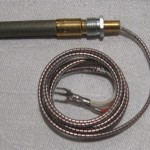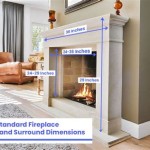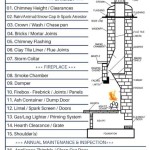Converting a Wood Burning Fireplace to Gas Logs: A Comprehensive Guide
Many homeowners appreciate the ambiance of a traditional wood-burning fireplace but find the maintenance and inconvenience associated with it less appealing. Stocking wood, managing ashes, and ensuring proper ventilation can be time-consuming and sometimes messy. Converting a wood-burning fireplace to gas logs offers a convenient alternative, providing the visual appeal of a fire with the ease and control of gas. This process involves specific steps and considerations to ensure safety and optimal performance.
Before initiating a fireplace conversion, it is crucial to understand the different types of gas logs available. Gas logs come in vented and ventless varieties, each with its own set of characteristics and requirements. Vented gas logs are designed to be used in fireplaces with a functioning chimney, mimicking the look of a real wood fire with larger, more realistic flames. They require the chimney to be open during operation to vent the combustion byproducts safely. Ventless gas logs, on the other hand, are designed to burn more efficiently and do not require a chimney for ventilation. However, they produce a small amount of carbon monoxide, so a properly functioning carbon monoxide detector is essential. Additionally, ventless systems may not be permitted in all jurisdictions, so checking local building codes is imperative.
Key Point 1: Assessment and Preparation
The initial step in converting a wood-burning fireplace is a thorough assessment of the existing structure and its compatibility with gas logs. This assessment should include inspecting the chimney for any obstructions or damage. A professional chimney sweep can be hired to clean and inspect the chimney flue, ensuring it is free of creosote buildup and any structural issues that could impede proper ventilation. If the fireplace is being converted to a ventless system, the chimney can be sealed or capped to prevent drafts. However, this step requires careful consideration and adherence to local building codes.
Furthermore, the size and dimensions of the firebox must be measured to determine the appropriate size of the gas log set. An undersized log set will look aesthetically unappealing, while an oversized set could potentially lead to overheating or incomplete combustion. It's also crucial to ensure the fireplace is constructed of non-combustible materials, such as brick or stone, to withstand the heat generated by the gas logs.
Finally, consider the existing gas line. If there is existing gas line available near the fireplace, check that it is adequate size for the proposed gas log size, including consulting the appliance specifications. If there is no existing gas line available, a licensed gas professional will need to run a new one to the fireplace location. This process involves tapping into the main gas line, running the pipe to the fireplace, and installing a shut-off valve. Due to the safety considerations involved, this work should only be performed by a qualified professional.
Key Point 2: Gas Log Installation and Safety
The installation process for gas logs varies slightly depending on whether a vented or ventless system is chosen. For both types, the first step involves placing the burner assembly in the firebox according to the manufacturer's instructions. This typically involves connecting the burner to the gas supply line using appropriate fittings and connectors. A leak test should be performed using a gas leak detection solution to ensure that all connections are tight and free of leaks.
With vented gas logs, the logs themselves are carefully arranged on top of the burner assembly to create a realistic-looking fire. The logs should be positioned in a way that allows for proper airflow and combustion. It's essential to follow the manufacturer's recommendations for log placement to avoid any safety hazards. For ventless gas logs, the logs are typically designed to interlock or fit together in a specific configuration. Again, following the manufacturer's instructions is crucial for proper operation.
Safety is paramount during the installation process. A carbon monoxide detector should be installed in the vicinity of the fireplace, regardless of whether a vented or ventless system is used. This will provide an early warning in the event of a carbon monoxide leak. Additionally, a gas shut-off valve should be easily accessible in case of emergencies. Before using the gas logs for the first time, carefully review the manufacturer's instructions and familiarize yourself with the operating procedures and safety precautions.
Key Point 3: Legal Considerations and Professional Assistance
Before converting a wood-burning fireplace to gas logs, it is essential to check local building codes and regulations. Many jurisdictions have specific requirements regarding gas fireplace installations, including permits, inspections, and venting requirements. Failure to comply with these regulations can result in fines or other penalties.
While experienced homeowners may be comfortable performing some aspects of the conversion process, such as cleaning the fireplace or arranging the logs, it is highly recommended to hire a qualified professional for any gas line work or burner assembly installation. A licensed gas fitter or HVAC technician has the expertise and training to ensure that the installation is performed safely and in accordance with all applicable codes. They can also advise on the best type of gas log system for the specific fireplace and provide ongoing maintenance and support.
Obtaining permits for the conversion can protect not only the homeowner but future owners as well. It provides assurances that the job was done by qualified professional.
Upon completion of the project, a final inspection by local authorities ensures that the conversion meets all safety and code requirements, providing peace of mind and ensuring the long-term safety and functionality of the gas log fireplace.

Wood Fireplaces Gas Conversion That Counts

Wood To Gas Fireplace Conversion In Wisconsin Free Quote Badgerland Waesha

Convert From Wood To Gas With A Insert The Kernel Burner

Can A Wood Burning Fireplace Be Converted To Gas The Flame Company

Wood Burner Conversion New Jersey Fireplaces Kjb

Wood Fireplace To Gas Logs Conversion Mad Hatter Services

Convert To Gas Installing Fireplace Inserts Doctor Flue

Want To Convert Gas Wood Fireplace Full Service Chimney

What S The Cost To Convert A Wood Fireplace Gas Orange County Register

Convert From Wood To Gas With A Insert The Kernel Burner
Related Posts








